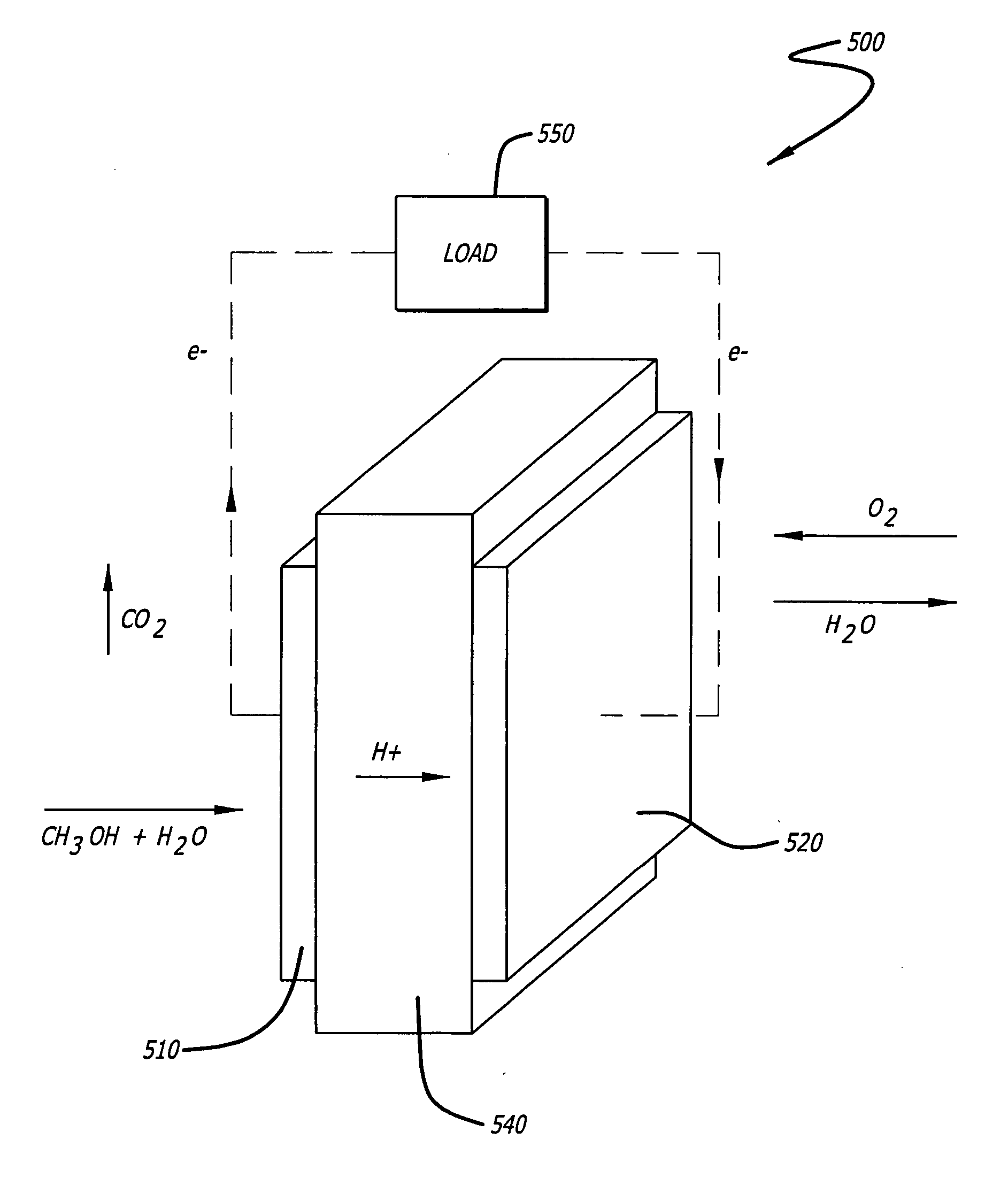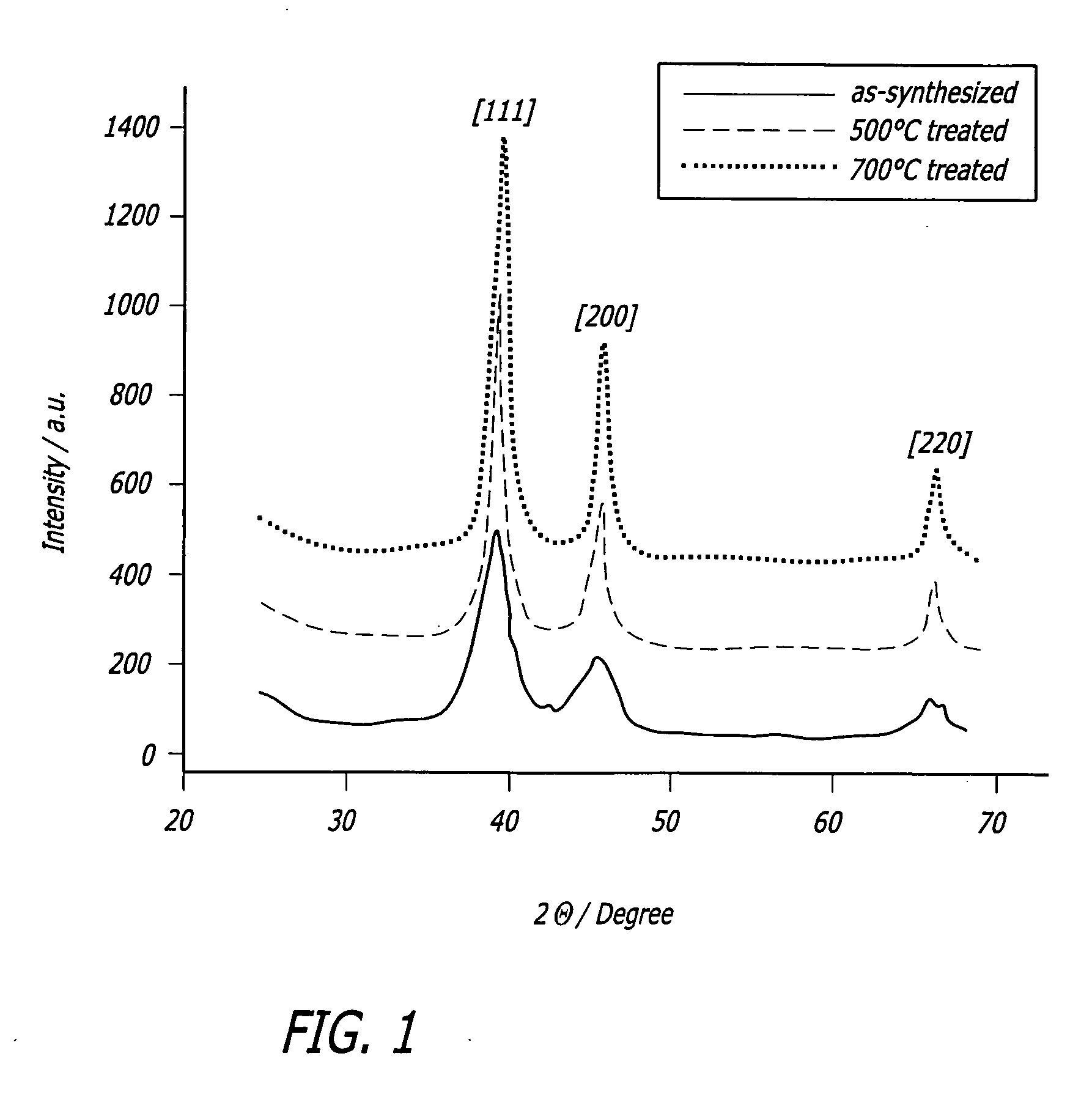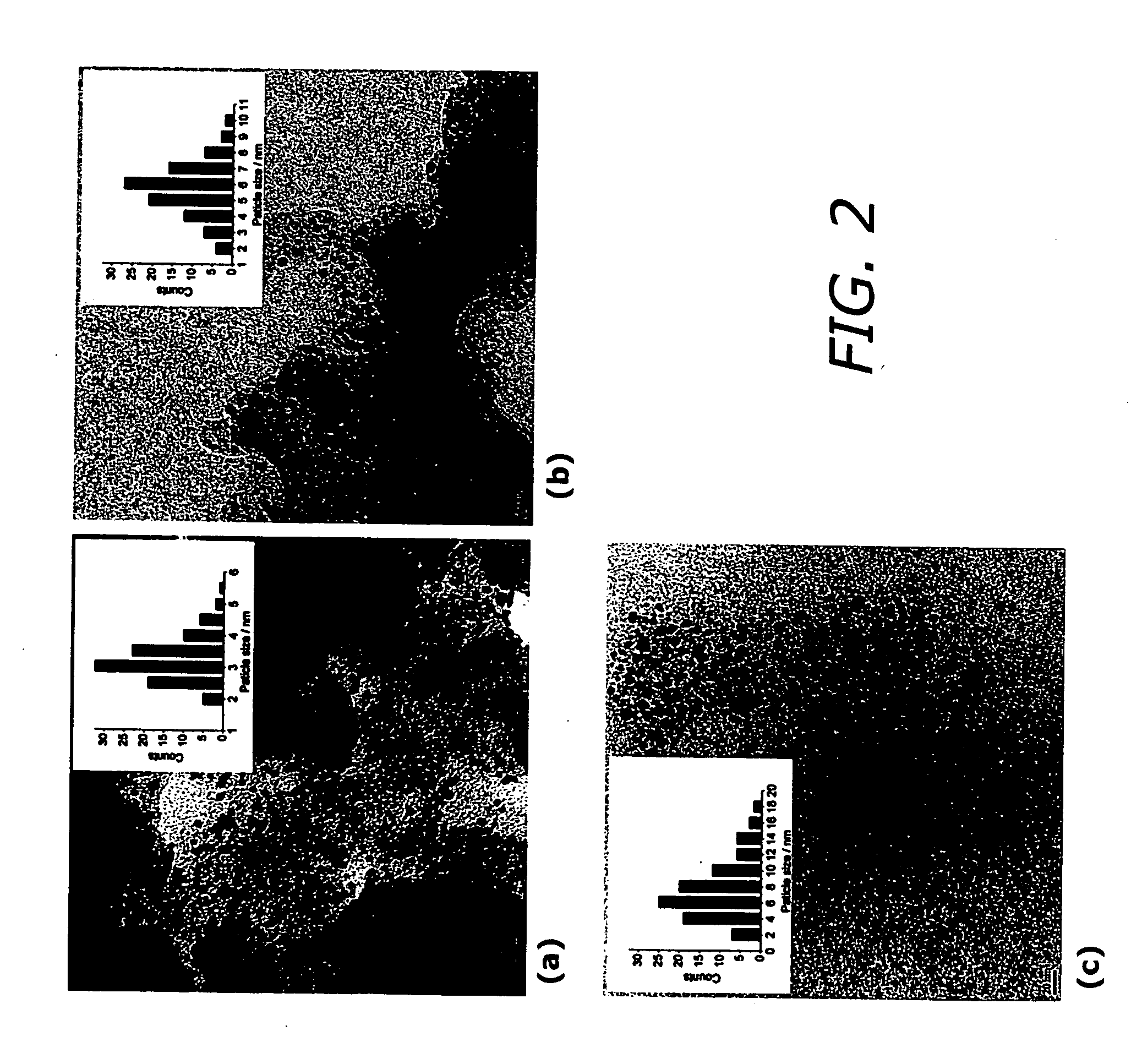Methanol resistant cathodic catalyst for direct methanol fuel cells
a cathode catalyst and direct methanol technology, applied in the direction of organic compound/hydride/coordination complex catalysts, cell components, physical/chemical process catalysts, etc., can solve the problems of methanol tolerance catalysts with orr activity inferior to pure platinum catalysts, material not attaining the orr activity of pure platinum in a methanol free electrolyte, and the effect of reducing methanol oxidation and maintaining high activity towards oxygen reduction
- Summary
- Abstract
- Description
- Claims
- Application Information
AI Technical Summary
Benefits of technology
Problems solved by technology
Method used
Image
Examples
Embodiment Construction
[0028] As shown in the drawings for purposes of illustration, the present invention is directed to a cathodic catalyst for direct methanol fuel cells (DMFC) that uses an iron macrocycle as an inhibitor for methanol oxidation. The present invention includes a method of preparing iron and platinum catalysts by sintering iron macrocycles and platinum nanoparticles on a carbon substrate. The catalyst of the present invention provides suppression of methanol oxidation while maintaining high activity towards oxygen reduction for incorporation into a DMFC cathode. The iron and platinum catalysts were tested using standard techniques with a rotating disk electrode (RDE).
[0029] In view of the problems and deficiencies encountered with prior art DMFC catalysts, it is desirable to achieve a methanol-tolerant catalyst with high activity towards an oxygen reduction reaction (ORR). In one embodiment of the present invention, the cathodic catalyst combines the high ORR activity potential of plati...
PUM
| Property | Measurement | Unit |
|---|---|---|
| Temperature | aaaaa | aaaaa |
Abstract
Description
Claims
Application Information
 Login to View More
Login to View More - R&D
- Intellectual Property
- Life Sciences
- Materials
- Tech Scout
- Unparalleled Data Quality
- Higher Quality Content
- 60% Fewer Hallucinations
Browse by: Latest US Patents, China's latest patents, Technical Efficacy Thesaurus, Application Domain, Technology Topic, Popular Technical Reports.
© 2025 PatSnap. All rights reserved.Legal|Privacy policy|Modern Slavery Act Transparency Statement|Sitemap|About US| Contact US: help@patsnap.com



